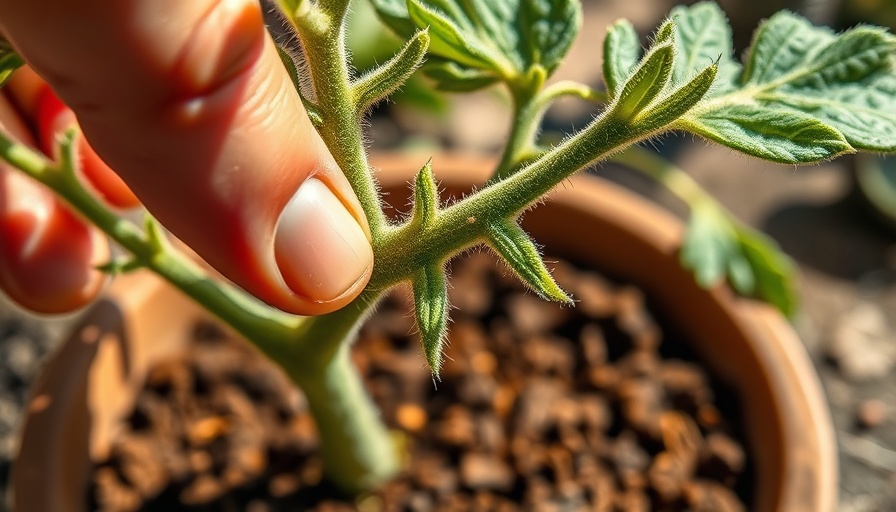
Understanding Tomato Trichomes: Nature's Unique Adaptation
As gardeners in the Okanagan, it's essential to understand not just the plants we cultivate but the fascinating biological processes that govern their growth. One common misconception is that those delicate white hairs on tomato plants are roots. In reality, they are called trichomes, a natural adaptation that plays a crucial role in the overall health of the plant. Understanding these structures can help you tend to your garden more effectively.
In 🚨These are NOT ROOTS! 🚨Tomato Hairs are Trichomes, the discussion dives into the biology of tomato plants, exploring key insights that sparked deeper analysis on our end.
What Exactly Are Trichomes?
Trichomes are tiny hair-like projections found on various plants, including tomatoes. These protective features serve multiple purposes: they can deter pests, reduce water loss by limiting evaporation, and play a role in reflecting sunlight. Instead of roots, these trichomes act as the plant's first line of defense—underscoring the importance of understanding their function.
Why Are Roots and Trichomes Confused?
The confusion often arises because both roots and trichomes have distinct, albeit different, roles in a plant's growth. The white bumps you've probably noticed at the base of the tomato plant are indeed the roots, while the trichomes extend outward. This visualization helps gardeners distinguish between the two, making it easier to nurture the plant correctly.
Benefits of Recognizing Trichomes in Your Garden
Knowing the difference between roots and trichomes gives you several advantages:
- Pest Management: Recognizing the natural defenses of your plants can alert you to potential pest issues. Trichomes can deter certain insects, so keeping plants healthy overall is essential.
- Water Conservation: Plants with abundant trichomes often require less watering, as these structures help minimize moisture loss. This can be particularly beneficial in our arid environment in the Okanagan.
- Harvest Quality: The presence of trichomes is indicative of the plant's overall health—understanding this can lead to better yields and higher-quality fruits.
Myths vs. Facts: Debunking Common Misconceptions
It's easy to fall prey to gardening myths, especially when misinformation travels quickly among local enthusiasts. One prevalent myth is that you should remove trichomes to promote root growth. However, doing so would strip the plant's natural defense mechanisms, weakening it over time. Instead, focus on nurturing all aspects of your tomato plants.
Actionable Insights for Okanagan Gardeners
As you tend to your tomato plants, keep these actionable insights in mind:
- Observe Regularly: Monitor your plants for any changes, noting how trichomes evolve under different conditions.
- Research Local Pests: Educate yourself about common pests in the Okanagan area and how trichomes can be beneficial.
- Adjust Watering Techniques: Experiment with varying your watering strategies based on your plant's trichome density.
The Future of Gardening: Emphasizing Awareness and Education
Understanding the biology behind your plants not only enhances your gardening skills but also promotes sustainability within the community. By fostering an environment of knowledge-sharing, gardeners can face common challenges more effectively, leading to healthier plants and better harvests.
Final Thoughts: Embrace the Wonder of Plant Biology
The dynamics of plant growth are incredibly intricate, and recognizing the significance of structures like trichomes can enrich your gardening experience. Armed with this knowledge, Okanagan gardeners can cultivate a deeper appreciation for their plants and the complexity of their natural defenses.
Ready to take your gardening skills to the next level? Start observing the trichomes on your plants today and see how this small feature can lead to big changes in your gardening approach.
 Add Row
Add Row  Add
Add 




 Add Row
Add Row  Add
Add 

Write A Comment